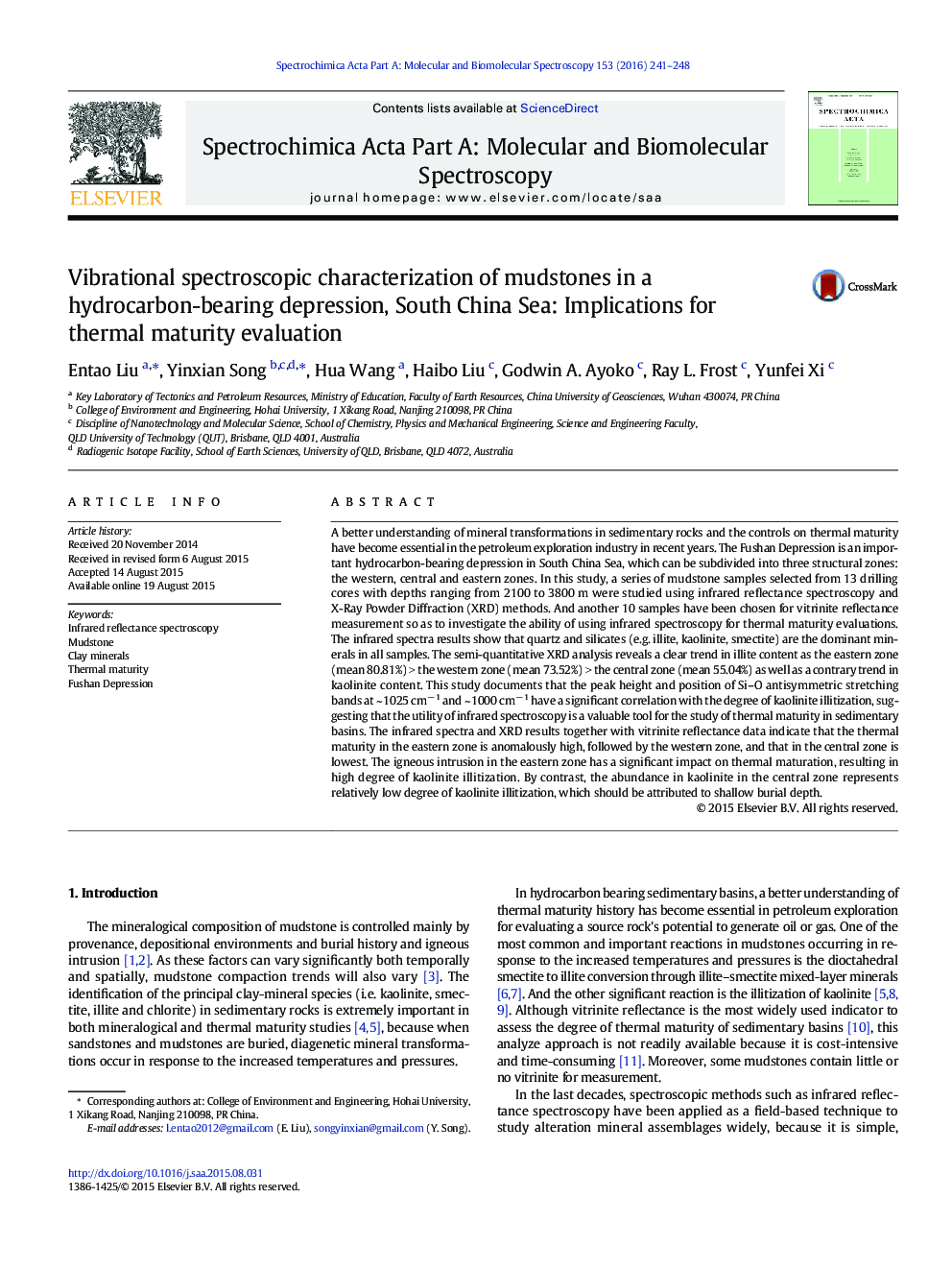| Article ID | Journal | Published Year | Pages | File Type |
|---|---|---|---|---|
| 1228723 | Spectrochimica Acta Part A: Molecular and Biomolecular Spectroscopy | 2016 | 8 Pages |
•Infrared spectra in mudstones from a hydrocarbon-bearing depression were studied.•The positional shifts in infrared spectra are correlated with the thermal maturity.•The Si–O bands can be used to effectively estimate thermal maturity of source rocks.
A better understanding of mineral transformations in sedimentary rocks and the controls on thermal maturity have become essential in the petroleum exploration industry in recent years. The Fushan Depression is an important hydrocarbon-bearing depression in South China Sea, which can be subdivided into three structural zones: the western, central and eastern zones. In this study, a series of mudstone samples selected from 13 drilling cores with depths ranging from 2100 to 3800 m were studied using infrared reflectance spectroscopy and X-Ray Powder Diffraction (XRD) methods. And another 10 samples have been chosen for vitrinite reflectance measurement so as to investigate the ability of using infrared spectroscopy for thermal maturity evaluations. The infrared spectra results show that quartz and silicates (e.g. illite, kaolinite, smectite) are the dominant minerals in all samples. The semi-quantitative XRD analysis reveals a clear trend in illite content as the eastern zone (mean 80.81%) > the western zone (mean 73.52%) > the central zone (mean 55.04%) as well as a contrary trend in kaolinite content. This study documents that the peak height and position of Si–O antisymmetric stretching bands at ~ 1025 cm− 1 and ~ 1000 cm− 1 have a significant correlation with the degree of kaolinite illitization, suggesting that the utility of infrared spectroscopy is a valuable tool for the study of thermal maturity in sedimentary basins. The infrared spectra and XRD results together with vitrinite reflectance data indicate that the thermal maturity in the eastern zone is anomalously high, followed by the western zone, and that in the central zone is lowest. The igneous intrusion in the eastern zone has a significant impact on thermal maturation, resulting in high degree of kaolinite illitization. By contrast, the abundance in kaolinite in the central zone represents relatively low degree of kaolinite illitization, which should be attributed to shallow burial depth.
Graphical abstractFigure optionsDownload full-size imageDownload as PowerPoint slide
